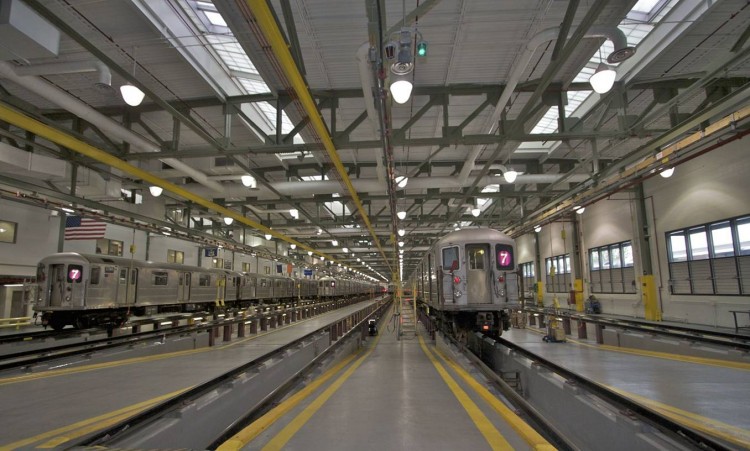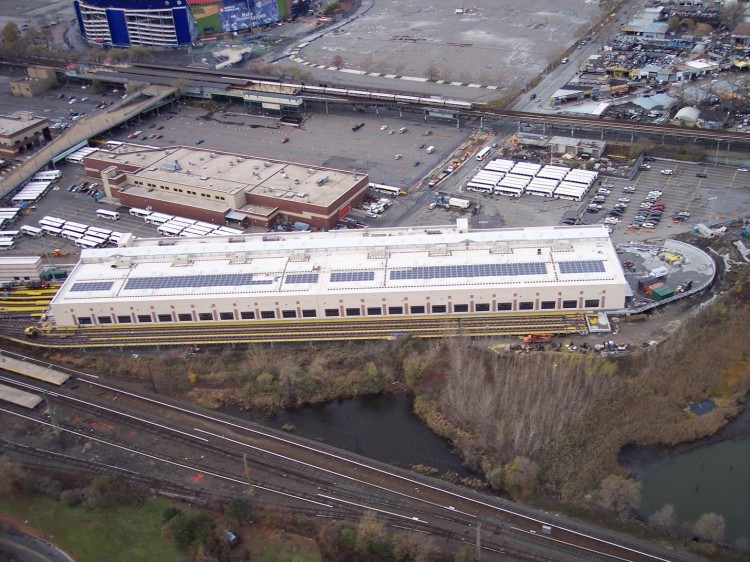Innovation on New York City Transit – On the Track to Sustainability
Innovation on New York City Transit – On the Track to Sustainability
by Brennan Duty, MBA ‘15 (03/13/2014)

During the SGE immersion trek to New York City, students visit the Metropolitan Transport Authority (MTA) which runs New York City’s buses, subways and railroads. Counter to popular belief, it is a company that uses technoplogy innovation in many ways.
Public-benefit corporations, like the United States Postal Service, are often criticized as laggards in pursuing innovative technologies that could serve their customers better. On their trek to New York City in mid-February, students in the Sustainable Global Enterprise (SGE) immersion learned that such criticisms most definitely do not apply to the Metropolitan Transport Authority (MTA), the company that runs New York City’s buses, subways and railroads.

Thomas Abdallah and Thomas Lamb, Chief Environmental Engineer and Chief of Innovation and Technology, respectively, spent four hours with the SGE Immersion cohort detailing how the MTA has been at the forefront of cost-saving and emission-reducing technology for years.
For Abdallah, the MTA’s role in the renewable energy industry is one of being an early adopter of technology that reduces costs and improves worker productivity. The best example of this is the Corona Maintenance Shop. In 2007, the maintenance shop became the first Leadership in Energy and Environmental Design (LEED) certified building under the MTA’s management. This certification was achieved by installing solar panels on the roof, taking advantage of natural light, and building the shop in a way such that it could take advantage of prevailing winds to naturally cool the building in the summer. In fact, on particularly hot summer days, temperatures can reach 98°F in some of the MTA’s maintenance shops, whereas the temperature never goes above 83°F in the Corona shop. This results in better working conditions, and thus higher productivity, as well as decreased energy costs.
Innovation occurs in earnest under Thomas Lamb’s management. Though he had the option of hiring a full-time staff, he instead opts to spend his time interviewing experts in new technologies and orchestrating the various departments in the MTA to implement the technologies his office vets after they go through an efficient but exhaustive review process.
The first stage in the process is Idea Conception, where any proposal is welcome. Those that address a current need pass through the “gate” and proceed to the next stage, Incubation. This starts the design process, where the idea is fleshed out to make sure it is economically practical. Assuming it is, it passes through another gate to conceptual design, final design and, if all has gone well, into implementation.

One of the best innovations to come out of this process is the application of a nanofilm on the porcelain insulators that are used to regulate the flow of electricity along rails. As insulators get dirty, the electrical current that powers trains increasingly diverts to the ground as opposed to the engine, costing $2 million a year in lost energy. Lamb’s office found the solution to this problem in a nanofilm technology used on cruise ships to prevent food from sticking to the china. His office followed the design innovation process and adapted the nanofilm technology for the insulators, resulting in significant savings from both decreased energy waste and labor costs, as the insulators previously had to be cleaned by hand.
It was a memorable visit because it ran counter to society’s notion that public benefit corporations are late adopters of technology. The truth is always more nuanced. And in the case of the MTA, the truth is that they are one of the most innovative companies – public or otherwise – any SGE Immersion cohort has ever visited.
Reprinted with permission from the Cornell Business Journal.
